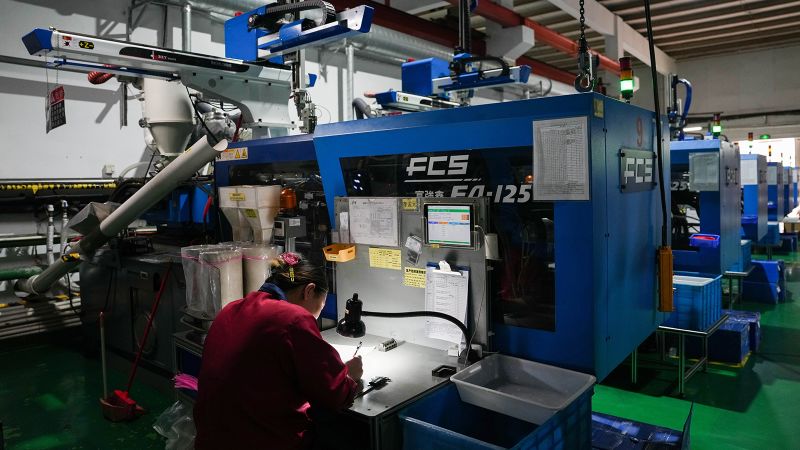Tariff uncertainty engulfs annual trade show in Hong Kong
TruthLens AI Analysis
The report highlights the tension and uncertainty surrounding a major trade show in Hong Kong, reflecting broader issues stemming from the ongoing US-China tariff conflict. This event typically serves as a showcase for manufacturers, particularly from China, but the escalating tariffs are creating a cloud of anxiety for many participants.
Purpose of the Report
The article aims to inform readers about the impact of the US-China trade war on global trade dynamics, particularly highlighting how it affects manufacturers in China. By focusing on the specific experiences of companies like Gaoxd Precision Industry, the report underscores the tangible consequences of policy decisions, thereby raising public awareness about the complexity of international trade relationships.
Public Sentiment
The narrative conveys a sense of worry and hesitation among businesses involved in international trade. This sentiment is likely to resonate with readers who have a vested interest in economic stability, manufacturing jobs, and the global market's health. The uncertainty may lead to a perception that the trade war is not only an economic issue but also a broader threat to employment and stability in various sectors.
Information Gaps
While the report provides insights into the challenges faced by manufacturers, it may not delve deeply into potential solutions or alternative strategies that companies could employ to mitigate these risks. This omission could lead to a one-sided view of the situation, focusing primarily on the negative impacts without exploring how businesses might adapt.
Manipulative Elements
There are elements of manipulation present, particularly in how the article emphasizes the urgency and gravity of the situation without providing a balanced view of the potential for negotiation or resolution. The language used may evoke a sense of crisis, potentially prompting readers to support certain political or economic actions in response.
Truthfulness of the Content
The report appears to be grounded in factual information regarding tariffs and their immediate effects on businesses, making it a reliable source for understanding the current trade climate. However, the emotional framing may skew readers' perceptions, suggesting that while the facts may be accurate, the implications drawn could be exaggerated.
Public Perception and Impact
The overall message may influence public opinion towards a more cautious approach regarding international trade policies. As the article raises awareness about the economic implications of tariff wars, it could lead to increased calls for diplomatic efforts to resolve such conflicts.
Supportive Communities
The article likely resonates with communities that are economically impacted by trade policies, including manufacturers, workers in the tech industry, and consumers concerned about product prices. It speaks to those who are directly affected by tariffs and could foster a sense of solidarity among affected stakeholders.
Market Reactions
The report could have ramifications in financial markets, particularly affecting stocks of companies heavily reliant on exports to the US or those involved in technology manufacturing. Investors may react to the perceived instability, leading to fluctuations in stock prices for firms like Gaoxd or others in similar sectors.
Global Power Dynamics
From a geopolitical perspective, this article underscores the fragility of US-China relations and their implications for global trade. The ongoing tensions may shape international alliances and economic policies, influencing how countries navigate trade in the future.
Use of AI in Writing
It is possible that AI was employed in the drafting of the article, especially in structuring the narrative and emphasizing certain phrases. Models like GPT could have been used to generate coherent text based on data inputs about tariffs and economic impacts. However, the emotional undertones and framing suggest a human editorial influence aimed at driving engagement.
In conclusion, the article provides valuable insights into the current trade tensions while potentially steering public sentiment towards a heightened awareness of the economic ramifications of the US-China tariff war. The focus on individual business experiences makes it relatable, yet the potential for manipulation through emotional framing should be considered when evaluating the report's overall reliability.
